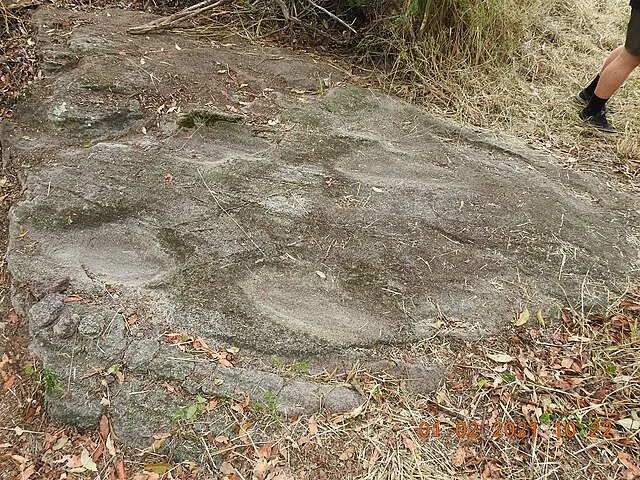The Gympie Ape Statue has intrigued historians, archaeologists, and the public since its discovery in Australia. This unusual artifact, found near Gympie in Queensland, has sparked debate about its origin, cultural significance, and even the possibility of pre-European contacts between ancient civilizations and Australia. This post examines the statue’s characteristics, possible origins, and its broader historical implications.
Get your dose of History via Email
Discovery of the Gympie Ape Statue
The Gympie Ape Statue was reportedly unearthed in the 1960s near the town of Gympie in southeastern Queensland. Accounts suggest that locals found the statue on land believed to have been part of a ceremonial ground used by Aboriginal communities. Since its discovery, the statue has fueled discussions about its possible connection to non-Indigenous cultures.
Description and Features of the Statue
The Gympie Ape is a carved stone statue, roughly 58 cm tall, with a humanoid appearance. It is commonly described as resembling a monkey or ape. The figure’s design includes details like a face with pronounced eyes, a flat nose, and hands resting on its chest. These features suggest an intentional carving style but do not match traditional Aboriginal carvings or known Indigenous Australian art forms.
Some researchers propose that the statue resembles Hanuman, the Hindu monkey god, or a figure from Southeast Asian art. These comparisons lead to theories suggesting the statue may have non-Australian origins, possibly linked to early visitors or even ancient Asian maritime traders.
Theories Regarding the Statue’s Origins
The Gympie Ape’s origin remains a topic of debate. Below are the main theories:
- Indigenous Australian Origin: Some researchers argue the statue could represent local Aboriginal mythology. However, the distinct lack of resemblance to known Indigenous artistic styles and the statue’s “ape” appearance casts doubt on this theory.
- Asian Cultural Influence: Other theories propose that the statue may have Asian origins, specifically connecting it to Hindu or Southeast Asian iconography. Advocates of this theory suggest the statue resembles Hanuman or other ape-like figures commonly seen in Hindu and Southeast Asian art. If this theory holds, it could suggest ancient maritime connections between Australia and parts of Asia.
- Colonial-Era Artifact: Some scholars contend that the Gympie Ape is a colonial-era creation, either as an imported object or a product of cultural diffusion after European contact. However, this explanation lacks evidence connecting it directly to known historical records from the colonial period.
- Practical Joke or Recent Hoax: A more skeptical viewpoint suggests the Gympie Ape may have been created in modern times as a hoax or as a practical joke. While there is no direct evidence of fabrication, the absence of comprehensive archaeological context casts doubt on its authenticity as an ancient artifact.
Debates and Controversies Surrounding the Gympie Ape
The statue’s origin remains controversial largely due to the limited documentation of its discovery. The lack of detailed archaeological records and stratigraphic evidence weakens claims about its age and cultural connections. Some critics argue that without a verified context, the Gympie Ape cannot be considered a reliable artifact for historical research.
Further, the resemblance to Southeast Asian art raises questions about early human interactions. However, there is no conclusive evidence to support pre-colonial contact between Asia and Australia. The theory of early cultural exchange remains speculative and is not widely accepted among mainstream archaeologists.
The Gympie Ape in Australian Archaeology
The Gympie Ape continues to be a unique artifact in Australian archaeology, standing apart from traditional Indigenous artworks and artifacts. Its presence adds an element of mystery and invites questions about Australia’s past. However, without scientific testing or credible archaeological context, the statue remains a controversial item rather than a definitive piece of historical evidence.
Conclusion
The Gympie Ape Statue remains a curiosity rather than a confirmed piece of ancient history. Its origins and purpose are uncertain, and its presence in Australia is still unexplained. While theories range from Indigenous creation to foreign influence, the lack of solid evidence means that these ideas remain speculative. The statue, however, contributes to ongoing discussions about Australia’s history and highlights the potential for future discoveries to reshape our understanding of early human connections across regions. Until more conclusive data is available, the Gympie Ape will continue to be a topic of interest and debate among historians, archaeologists, and enthusiasts alike.
Source:

